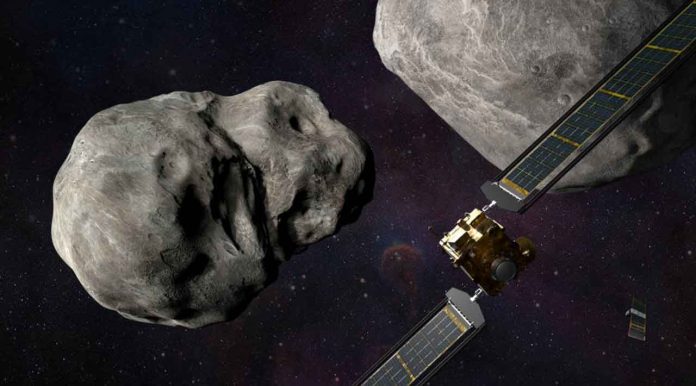
NASA will hold a virtual media briefing at 1 pm EDT Thursday, November 4, 2021 to preview the launch of the agency’s first planetary defense test mission, the Double Asteroid Redirection Test (DART).
As a technology test, the mission will help determine if intentionally crashing a spacecraft into an asteroid is an effective way to change its course, should an Earth-threatening asteroid be discovered in the future.
DART’s target asteroid is not a threat to Earth.
The briefing will livestream on NASA Television, the NASA app, the agency’s website, and NASA’s Twitter account.
Briefing participants will be:
- Lindley Johnson, planetary defense officer, NASA Headquarters, Washington
- Elena Adams, DART mission systems engineer, Johns Hopkins Applied Physics Laboratory (APL), Laurel, Maryland
- Nancy Chabot, DART coordination lead, Johns Hopkins APL
- Andy Cheng, DART investigation team lead, Johns Hopkins APL
DART is scheduled to launch no earlier than 1:20 a.m. EST Wednesday, Nov. 24 (10:20 p.m. PST Tuesday, Nov. 23) on a SpaceX Falcon 9 rocket from Vandenberg Space Force Base in California.
The spacecraft is designed to direct itself to impact an asteroid while traveling at a speed of roughly 15,000 miles per hour (24,000 kilometers per hour). Its target is the asteroid moonlet Dimorphos (Greek for “two forms”), which orbits a larger asteroid named Didymos (Greek for “twin”). In fall 2022, DART will impact Dimorphos to change its orbit within the Didymos binary asteroid system. The Didymos system is the ideal candidate for DART because it poses no actual impact threat to Earth, and scientists can measure the change in Dimorphos’ orbit with ground-based telescopes.
To allow the public to share in the excitement of DART, NASA has launched the Planetary Defenders campaign. Participants can answer a short series of questions about planetary defense to earn their planetary defender certificate, which they can download or print, as well as a digital badge to share on social media. To participate, visit:





